NVIDIA GeForce GTX 480 GF100 DX11 Video Card Review
S.T.A.L.K.E.R.: Call of Pripyat
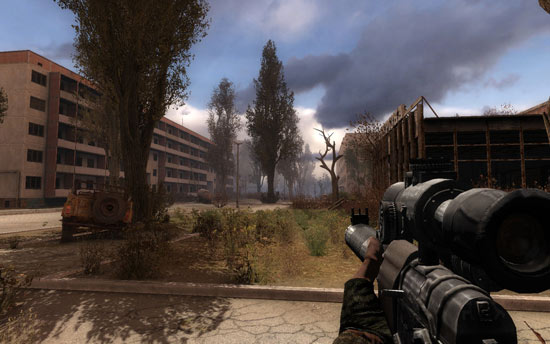
The events of S.T.A.L.K.E.R.: Call of Pripyat unfold shortly after the end of S.T.A.L.K.E.R.: Shadow of Chernobyl following the ending in which Strelok destroys the C-Consciousness. Having discovered the open path to the Zone’s center, the government decides to stage a large-scale operation to take control of the Chernobyl nuclear plant.
S.T.A.L.K.E.R.: Call of Pripyat utilizes the XRAY 1.6 Engine, allowing advanced modern graphical features through the use of DirectX 11 to be fully integrated; one outstanding feature being the inclusion of real-time GPU tessellation. Regions and maps feature photo realistic scenes of the region it is made to represent. There is also extensive support for older versions of DirectX, meaning that Call of Pripyat is also compatible with older DirectX 8, 9, 10 and 10.1 graphics cards.
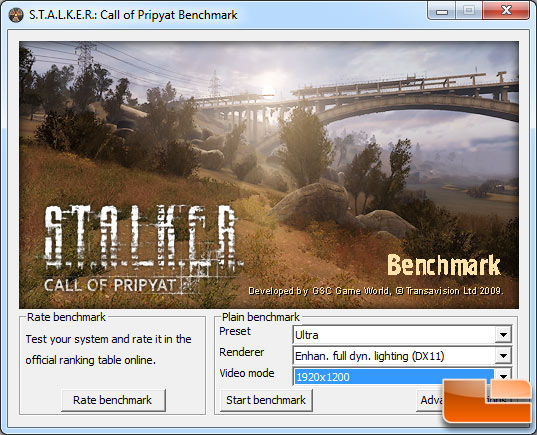
The game S.T.A.L.K.E.R.: CoP has no internal benchmarking tools built into the game engine, but they do have a standalone benchmark available that we used for our testing purposes. The screen capture above shows the main window of the benchmark with our settings. Notice we are running Enhanced Full Dynamic Lighting “DX11” as our renderer.
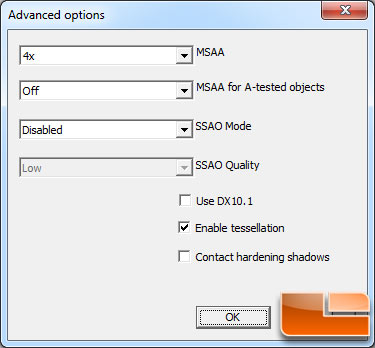
Under the advanced settings we enabled tessellation and 4x MSAA. We didn’t enable ambient occlusion as we wanted to use these test settings for mainstream cards down the road and these settings should be tough enough to stress the Radeon HD 5000 series cards.
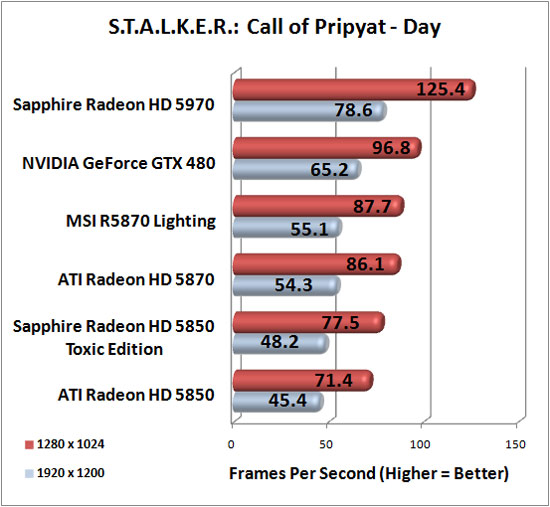
The benchmark gives you results for four different lighting scenarios and
the easiest on graphics cards are the ‘day’ settings, so we will start
there. As you can see, all of the cards were able to easily average above 45FPS, at a resolution of 1920×1200. The NVIDIA GeForce GTX 480 outpaced the rest of the test cards in this benchmark. The GTX 480 was ~10% faster than the MSI R5870 Lighting in 1280×1024. The performance numbers go up from there when you examine how the GTX 480 does in higher resolutions. In 1920×1200, the difference is a whooping 18% over both 5870s.
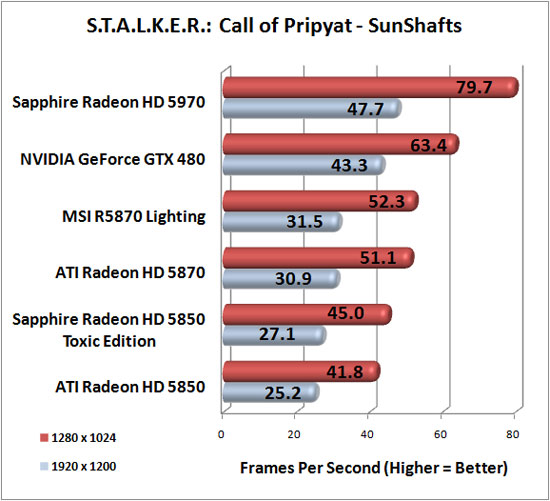
and all the cards took a drastic performance hit. The Radeon HD
5870 cards were barely able to stay above 30FPS, while the NVIDIA GTX 480 was a bit more comfortable around 43FPS at
1920×1200. In 1280×1024 resolutions, the NVIDIA GeForce GTX 480 excelled at more than 63FPS outpacing the 5870s with ease – a 20% difference in performance!

Comments are closed.